Bridgewater Associates founder Ray Dalio has dramatically increased his Bitcoin allocation recommendation from 2% to 15%, citing escalating US debt risks that could trigger currency devaluation similar to historical collapses in the 1930s and 1970s. This Market Insights analysis examines how the billionaire investor now views Bitcoin as a critical hedge against what he calls a potential “economic heart attack” facing America within three years. The updated guidance represents a major shift from his previous 1-2% recommendation in 2022, reflecting growing concern over the US government’s $37.7 trillion debt burden.
Summary: Dalio recommends 15% portfolio allocation to Bitcoin or gold combined as optimal risk-return strategy amid US fiscal crisis. Despite preferring gold, he acknowledges Bitcoin’s scarcity benefits while warning about privacy limitations and regulatory risks for mainstream adoption.
Why Ray Dalio Changed His Bitcoin Stance
From Skeptic to Strategic Advocate
Dalio’s evolution from crypto skeptic to strategic advocate stems from his analysis of unsustainable US debt dynamics. The government currently spends $7 trillion annually while collecting only $5 trillion in revenue, creating a $2 trillion deficit. With federal debt now six times annual revenue and interest payments consuming $1 trillion yearly—half the budget deficit—traditional portfolio strategies face unprecedented risks. According to CoinDesk’s coverage of Dalio’s recent statements, this represents a shift from his 2022 recommendation of just 1-2% in Bitcoin, reflecting growing concern over what he calls a “debt doom loop.”
The Bridgewater founder’s concern centers on what he terms a “debt doom loop” where the government can only service existing obligations by issuing more debt or having the Federal Reserve print money. This environment creates risks of currency devaluation, prompting investors to seek hedges like gold and Bitcoin, assets less correlated with traditional fiat currencies.
Historical Context for Currency Collapse
Dalio’s framework draws from historical analysis of reserve currency transitions, particularly the collapse of the British pound’s dominance in the mid-20th century. He warns that without reducing the fiscal deficit to 3% of GDP through spending cuts and tax increases, America risks repeating past collapses of dominant currencies that occurred when debt burdens became unsustainable.

Bitcoin’s Role in Dalio’s Investment Framework
Limited Supply Advantage
Dalio highlights Bitcoin’s limited supply and transactional advantages but doubts central banks will adopt it as reserve currency due to transparency concerns. Unlike traditional currencies that can be devalued through central bank printing, Bitcoin’s 21 million coin cap provides protection against monetary debasement—a critical factor as global central banks coordinate expansionary policies. Data from DeFiLlama shows Bitcoin’s market cap has grown significantly as institutional adoption increases, validating its role as a digital store of value.
The scarcity narrative becomes particularly compelling when considering the Federal Reserve’s balance sheet expansion and the European Central Bank’s quantitative easing programs. Bitcoin’s programmatic supply schedule offers predictability that fiat currencies cannot match during periods of aggressive monetary expansion.
Privacy and Regulatory Limitations
Despite acknowledging Bitcoin’s benefits, Dalio maintains significant reservations about its institutional adoption. He believes central banks will avoid Bitcoin due to its lack of privacy and potential regulatory challenges, noting that “governments can see who is doing what transactions on it.” This transparency creates surveillance concerns that limit Bitcoin’s appeal as a reserve asset for sovereign institutions.
| Bitcoin Advantages | Dalio’s Concerns |
|---|---|
| Limited 21M supply | Government surveillance capabilities |
| Efficient transactions | Potential code vulnerabilities |
| Decentralized network | Regulatory control risks |
| Inflation hedge properties | Central bank adoption unlikely |
Technology Risks and Government Control
Dalio has questioned Bitcoin’s technological aspects, stating “there is a question of whether the code could be broken or things can be done to make it less effective, including government controls”. This skepticism reflects concerns about the cryptocurrency’s long-term viability against determined government opposition, similar to the gold confiscation orders of the 1930s.
The 15% Allocation Strategy Explained
Optimal Risk-Return Framework
Dalio described the 15% recommendation as suitable for a portfolio that is “neutral on everything,” aiming for optimal return-to-risk balance. This allocation combines Bitcoin and gold as complementary hedges against fiat currency devaluation, with investors free to determine the specific ratio between the two assets based on their risk tolerance and outlook.
The allocation strategy recognizes that both assets serve different roles in portfolio protection. Gold provides time-tested stability with institutional acceptance, while Bitcoin offers higher growth potential with corresponding volatility. Together, they create a diversified hedge against various economic scenarios.
Comparison to Previous Recommendations
The dramatic increase from Dalio’s previous 1-2% Bitcoin allocation reflects the deteriorating fiscal situation. His 2022 recommendation focused on Bitcoin as a speculative allocation that investors “wouldn’t mind losing 80% of,” while the current 15% guidance positions Bitcoin and gold as essential portfolio components for wealth preservation.
Current Market Response and Implementation
Institutional Adoption Trends
While Bridgewater Associates has not officially aligned its strategies with Dalio’s personal recommendations, the guidance reflects broader institutional interest in alternative assets. Major exchanges have reported increased institutional activity in Bitcoin, with some platforms offering up to 5x leverage on perpetual contracts to meet growing demand from sophisticated investors.
Price Impact and Market Dynamics
Bitcoin has shown modest gains following Dalio’s updated recommendations, though analysts attribute price movements primarily to broader macroeconomic factors rather than specific allocation guidance. The cryptocurrency trades around $119,000, benefiting from reduced trade tensions and expectations of dovish Federal Reserve policy. Recent analysis from Cointelegraph highlights how institutional interest continues driving Bitcoin’s market dynamics.
Implementation Considerations
Investors implementing Dalio’s strategy should consider dollar-cost averaging into positions rather than making lump-sum purchases, given Bitcoin’s volatility. The allocation can be adjusted based on individual circumstances, with more conservative investors potentially favoring gold while those comfortable with higher volatility might emphasize Bitcoin.
Risks and Counterarguments
Volatility Concerns
Critics argue that Bitcoin’s extreme volatility makes it unsuitable for the stable allocation percentages Dalio suggests. The cryptocurrency has experienced 80%+ drawdowns in previous cycles, potentially devastating portfolio values if allocated at 15% during market downturns.
Regulatory Uncertainty
Government crackdowns remain a significant risk factor, as Dalio himself acknowledges. Recent regulatory actions in various jurisdictions demonstrate that Bitcoin’s success could indeed trigger government intervention, validating Dalio’s concern that “Bitcoin’s biggest risk is being successful.”
Limited Utility Beyond Speculation
Unlike gold, which has industrial applications and central bank demand, Bitcoin’s value proposition relies primarily on its monetary properties and network effects. This narrow use case creates concentration risk if adoption fails to meet expectations or alternative cryptocurrencies capture market share.
FAQ: Ray Dalio’s Bitcoin Investment Strategy
What percentage of Bitcoin does Ray Dalio recommend? Dalio recommends up to 15% allocation to Bitcoin and gold combined, with the specific ratio left to individual investor preference. He personally holds “some Bitcoin” but favors gold within this allocation.
Why did Dalio increase his Bitcoin recommendation from 2% to 15%? The increase reflects growing concerns about US debt sustainability, with government deficit spending creating risks of currency devaluation similar to historical collapses of reserve currencies.
Does Dalio prefer Bitcoin or gold? Dalio “strongly prefers” gold over Bitcoin due to its historical stability and institutional acceptance, though he acknowledges Bitcoin’s scarcity advantages and transaction efficiency.
What are Dalio’s main concerns about Bitcoin? Key concerns include government surveillance capabilities, potential regulatory controls, technological vulnerabilities, and central bank reluctance to adopt Bitcoin as a reserve currency.
How does the US debt crisis affect Bitcoin investment strategy? With $37.7 trillion in federal debt and $2 trillion annual deficits, traditional currency risks increase, making scarce assets like Bitcoin more attractive as hedges against devaluation.
Will central banks adopt Bitcoin according to Dalio? Dalio doubts central bank adoption due to Bitcoin’s transparency allowing government surveillance and tracking of all transactions, limiting its appeal as a reserve asset.
What historical parallels does Dalio draw for currency collapse? He references the 1930s gold confiscation and 1970s dollar devaluation as examples of how governments respond to fiscal crises, potentially threatening Bitcoin’s success.
Should investors follow Dalio’s 15% allocation exactly? Dalio emphasizes that the specific allocation ratio “is up to you,” suggesting investors adapt the framework based on their risk tolerance and economic outlook.
Key Takeaways
- Strategic Shift: Dalio’s recommendation increase from 2% to 15% reflects severe concerns about US fiscal sustainability and potential currency devaluation within three years.
- Gold Preference: Despite acknowledging Bitcoin’s advantages, Dalio maintains preference for gold due to privacy concerns and regulatory risks limiting Bitcoin’s institutional adoption.
- Implementation Flexibility: The 15% allocation can be split between Bitcoin and gold based on individual risk tolerance, with the strategy focused on diversification against fiat currency risks.
- Regulatory Awareness: Investors should monitor government responses to Bitcoin’s success, as Dalio warns that “Bitcoin’s biggest risk is being successful” due to potential regulatory backlash.
- Macroeconomic Focus: The strategy addresses broader economic risks rather than Bitcoin-specific factors, positioning both assets as hedges against unprecedented US debt levels and monetary expansion.
Ray Dalio’s updated Bitcoin guidance represents a fundamental shift in institutional thinking about cryptocurrency’s role in portfolio construction. While maintaining healthy skepticism about Bitcoin’s limitations, his 15% allocation framework acknowledges the growing need for alternatives to traditional fiat-based investments in an era of unprecedented fiscal risk. Investors should carefully consider their individual circumstances and risk tolerance when implementing such strategies, recognizing that both Bitcoin and gold carry their own unique risks alongside their hedging benefits.





